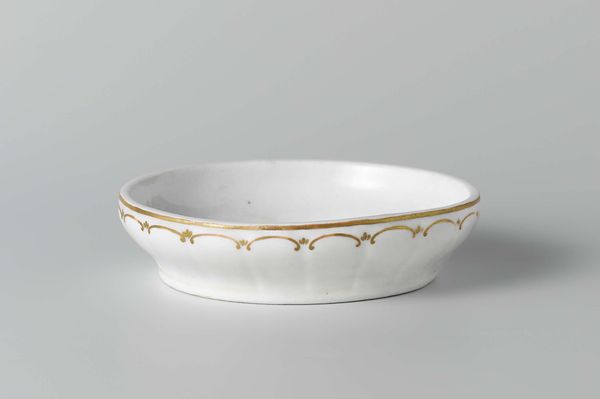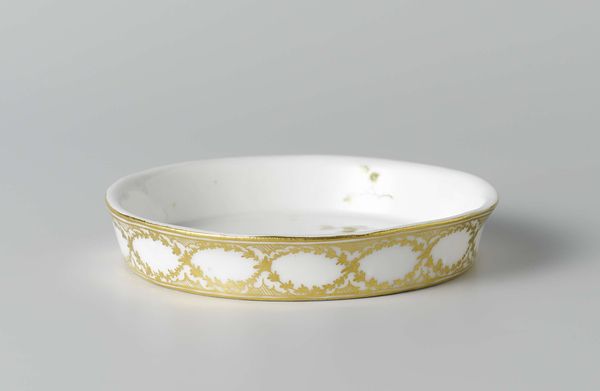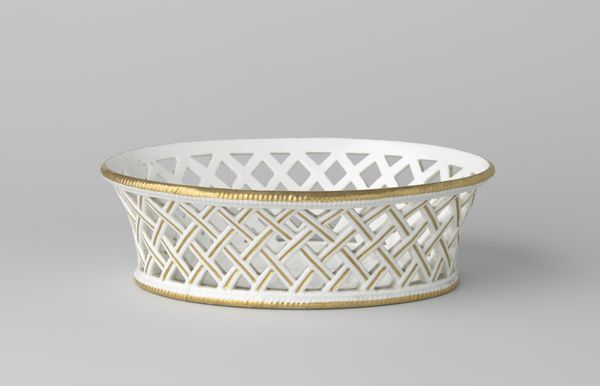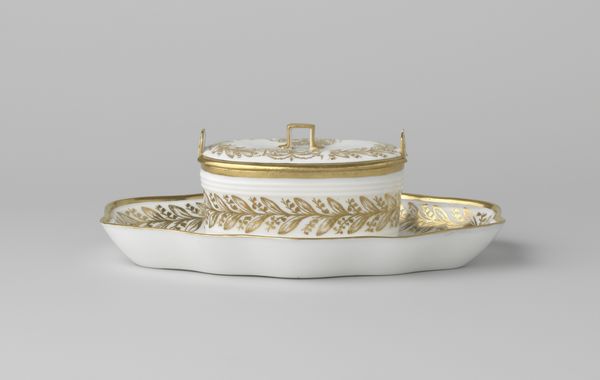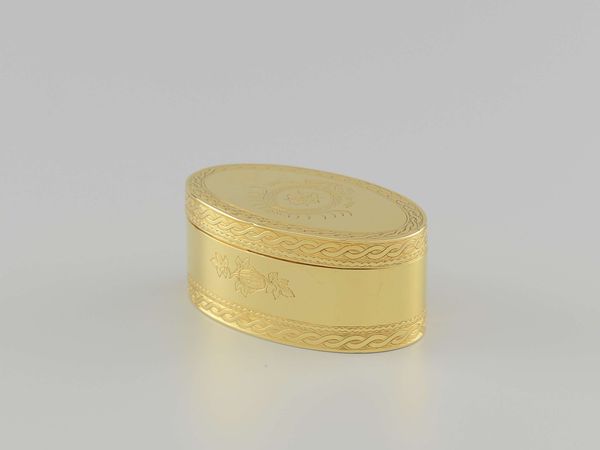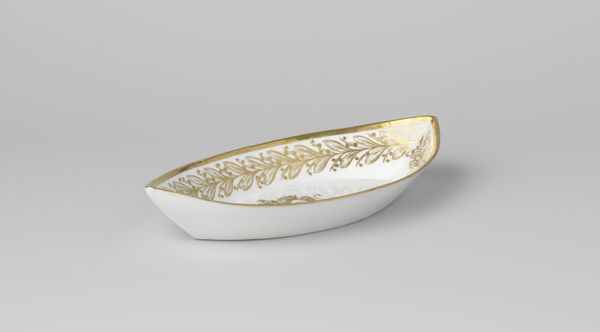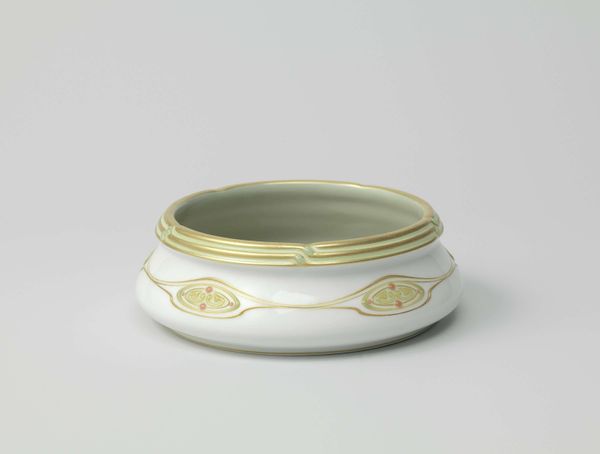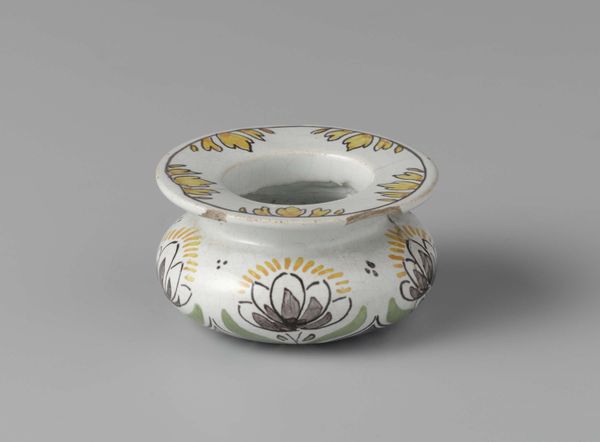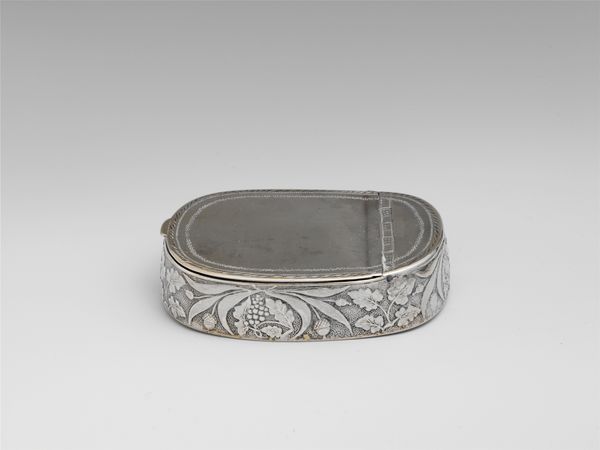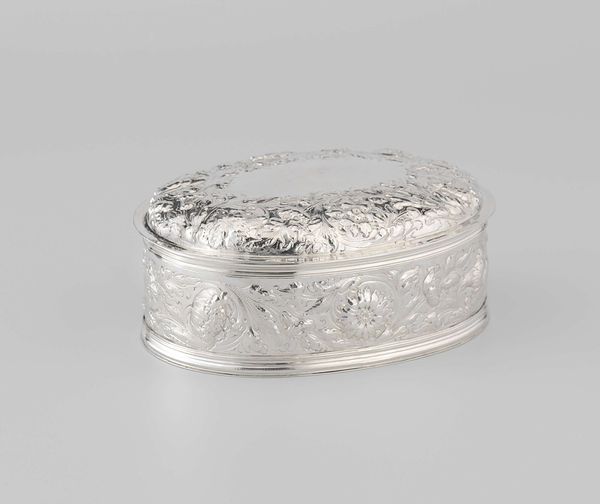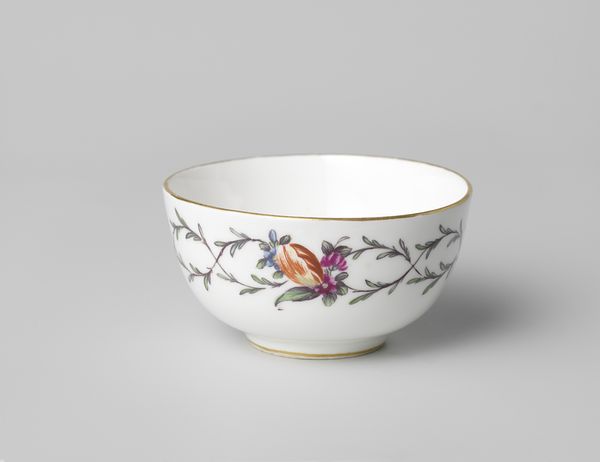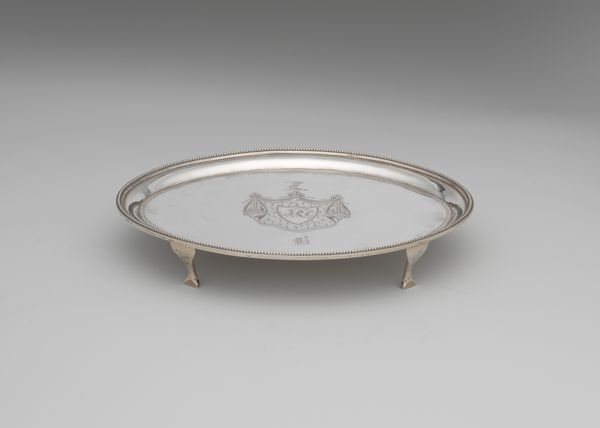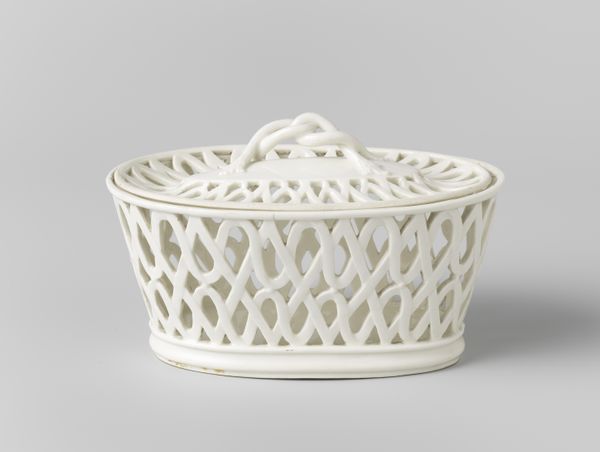
ceramic, porcelain
#
neoclacissism
#
ceramic
#
porcelain
#
decorative-art
Dimensions: height 2.1 cm, width 6.3 cm, depth 4.6 cm, width 6.7 cm, depth 4.8 cm
Copyright: Rijks Museum: Open Domain
Curator: Here we have a delicate object titled "Salt with a floral scroll", made circa 1790-1800, currently residing at the Rijksmuseum, made by E. Blancheron. Editor: My first thought is how effortlessly elegant it appears. It feels light, despite being rendered in porcelain, with a colour palette confined to simple shades of white and gold. There is something very aristocratic and old world about the decorative choices. Curator: Precisely. It exemplifies Neoclassical design, hearkening back to classical forms of beauty and restraint. Consider how salt, the content, would be elevated through this ornate dish. Salt being used symbolically across countless spiritual traditions. Consider how essential salt is in maintaining life. The symbolic connection this gives the porcelain object, and to whoever the salt belongs to, has deep social meaning. Editor: The floral motif—the leafy garlands rendered in gold—certainly evokes notions of luxury and sophistication. Were these emblems typically tied to particular families, perhaps as part of a coat-of-arms signifying power, control, wealth, and social distinction? What message does this decoration transmit in its domestic setting, what hierarchies are being established, or subtly reinforced? Curator: Flowers carry deep symbolic meaning. Though the botanical symbolism depends on identifying the flower accurately, they might signal rejuvenation or joy, connecting earthly life to the eternal through beauty. The laurel can represent triumph, pride and accomplishment, a sense of timeless beauty. The flower choices speak volumes about aspirations. The cultural values are encoded in visual forms through objects such as these. Editor: Yes, though sometimes this pursuit of "timeless beauty" masks the more troubling realities of that period. Objects such as these were more than likely symbols of the colonial project of the era. Curator: It’s true, the allure can blind us to structural inequalities perpetuated through fine craftsmanship, the porcelain originating in spaces which have complex colonial relationships with Europe at the time. Understanding objects like this needs a multi-pronged understanding to not contribute to the dangers of a single narrative, even when viewing a vessel used for something so small, even mundane, as containing salt. Editor: It makes me question what role these ornate salt cellars, in general, played in rituals of status. Thinking through the wider sociopolitical conditions reminds us of the stories of human relationship that extend far beyond simple aesthetics and use value.
Comments
No comments
Be the first to comment and join the conversation on the ultimate creative platform.
